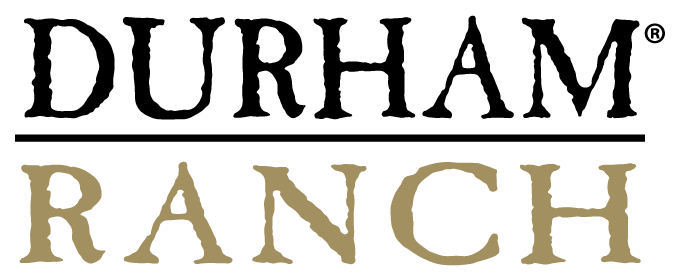One of the most common words of advice given to a new bison producer is, “You can make a bison go anywhere it wants to go.”
Through animal handling experts like Bud Williams, we’ve learned how to gently apply and release pressure to bison by moving within the animals’ natural flight zones. Using these natural techniques helps the animals move through facilities more calmly. “Slow and quiet” is a prerequisite for successful management. Bison still have their prey animal instincts, and will generally react to unfamiliar species (including humans) that move within their comfort zone.
Bison are naturally-adapted to the environmental conditions of North America, so we handle the animals less often than do those of domesticated species like cattle and sheep.
Growth hormones are never used in Durham Ranch bison. Humane handling practices used here are adapted to the behavioral patterns of the bison.
Our process begins with maintaining pasture and corral conditions at Durham Ranch. We have learned that ample food and water, and a right balance of male and female animals, will keep the herd at “home.”
Bison finishing operations are designed to allow animals to exercise their natural social behavior, including the establishment of a natural “pecking order.” Providing ample space assures that stress is minimized, which results in better quality meat. The standard recommendation of 400 sq. ft. per animal for bison is roughly double the space allotted for cattle in a similar arrangement. The same principles apply to the harvesting of bison in our commercial processing facilities.
At Durham Ranch, we recognize that we are the stewards of this magnificent animal. The baseline of that stewardship is respect for the animal, and a commitment to humane husbandry throughout the life cycle.
*Information taken from the National Bison Association website, www.bisoncentral.com, with permission.


